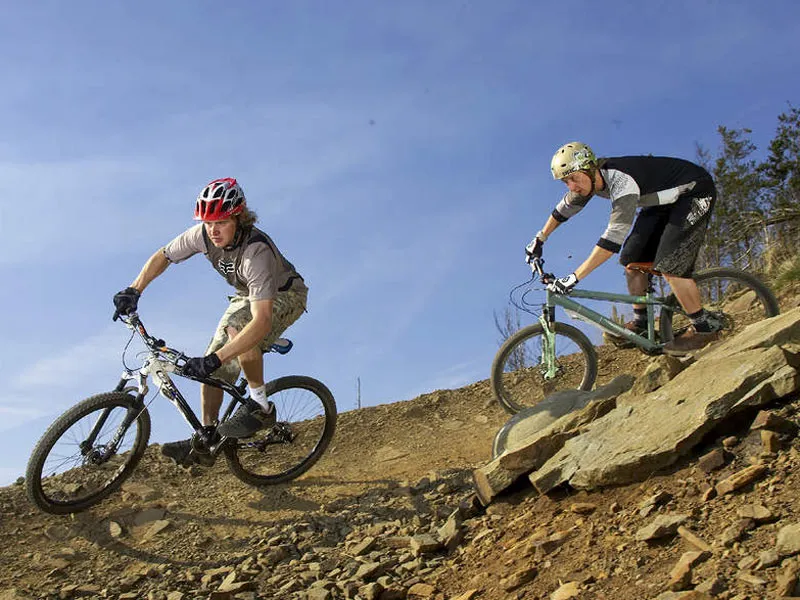Unless you have the skills to ride all-mountain properly, you’ll just be a passenger on your bike. Which is why you need to learn the right techniques on a hardtail first…
Downhill and 4X rider Dave ‘Bullhead’ Wardell has always ridden hardtails and probably always will. When he’s not racing downhill or training to race downhill, he’s more than likely to be out on a hardtail, be that a cross-country number or his 4X race rig. In fact, he jokes that suspension is still a novelty to him.
With a bit of expert help from Dave, we’re looking at the sort of situations that all-mountain riders are likely to encounter on trails ranging from basic to advanced and the skills needed to be able to cope with them. Obviously, these are easiest and most effective to learn on a hardtail.
We also recognise that many riders don’t have a lot of spare time to devote to practising their technique, so we’ll show you a few ways of polishing your skills without eating into your riding time too much.
- The basics
If approached in the right way, there’s not much even the most inexperienced rider can’t tackle. Here are a few obstacles you’ll find on many modern trails…
Skinnies/North shore
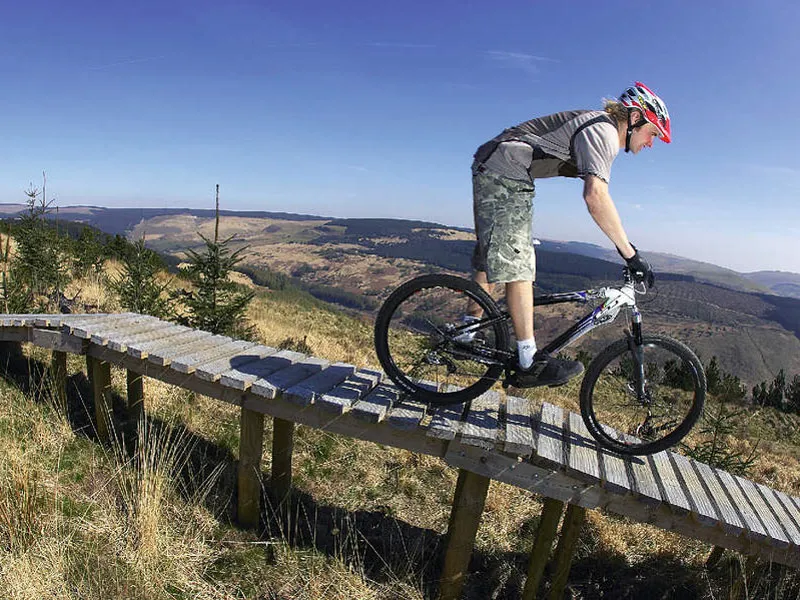
Riding thin obstacles is technically just as easy as wider stuff – much of the difficulty is actually in your head. Your tyres cover only a tiny amount of ground at any one time – generally about a 2.5in width – and without thinking about it you can ride in a virtually straight line for ages. Try thinking about it, though, and it becomes unnerving…
So long as you don’t move suddenly, your rear wheel will follow and you’ll be away.
Rock drop
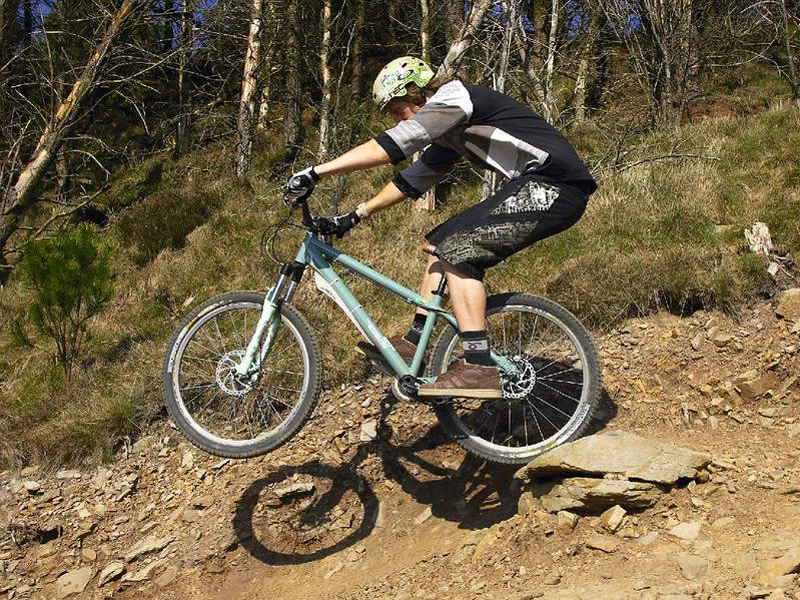
You’re going to encounter rocks on any decent trail, and sooner or later you’ll end up with no choice but to jump off one.
Generally, speed is your friend with rocks – if you slow down you risk getting ‘bogged down’ and caught out in the rocks or, worse still, going over the bar. Practice pulling up your front end and landing on both wheels, or slightly rear wheel first. Try it on something less challenging to start with, such as a kerb, and then build up to bigger obstacles.
Bermed turns
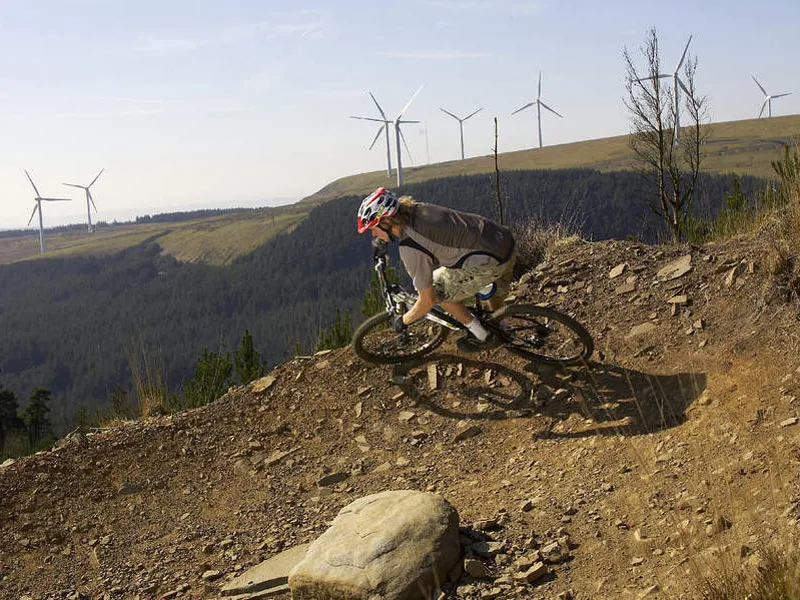
A berm or banked turn isn’t strictly there to make the turn easier, it’s there to maintain your speed and make the turn faster. Too many people don’t think about a turn before entering it so they mess up the exit.
If you don’t ride berms correctly, you’ll lose all your speed and momentum…
Technical rock gardens
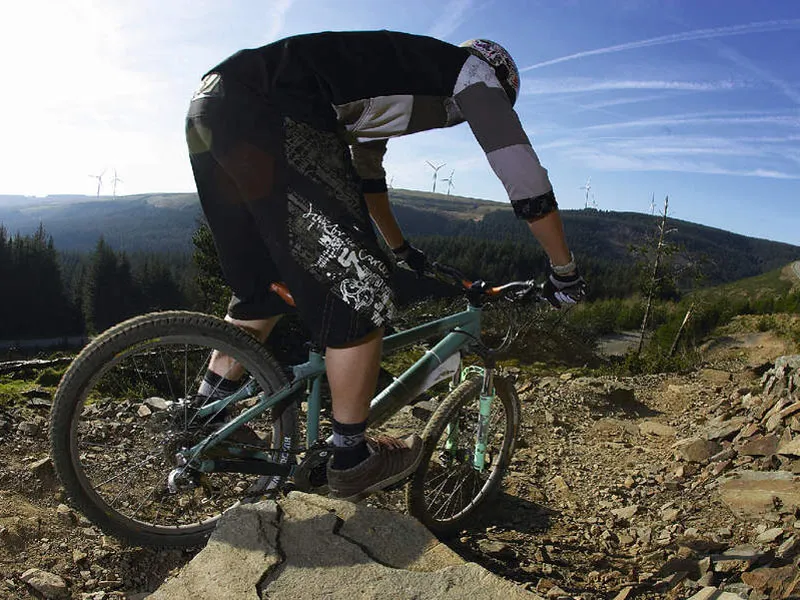
The best way to approach rough sections with rocks is to try to skip across the top of them, but every now and again you’re going to encounter places with rocks that are too big and have gaps between them that are too large. This is one of the areas where you have to pick your way through. You’ll bash your pedals but don’t be afraid to do so.
- Intermediate
Steep banks

You can encounter steep banks on any sort of trail, and they’re pretty much always rideable. But sometimes you’ll come across a bank that just doesn’t look possible. So long as there’s a good transition both in and out of the bank, even a vertical drop can be rolled – you just have to avoid braking while rolling over the edge.
Look for a bank about head height, and as steep as you dare, to practice on. This height is safer than bigger options. You can then build up to steeper and higher banks.
1] Approach:
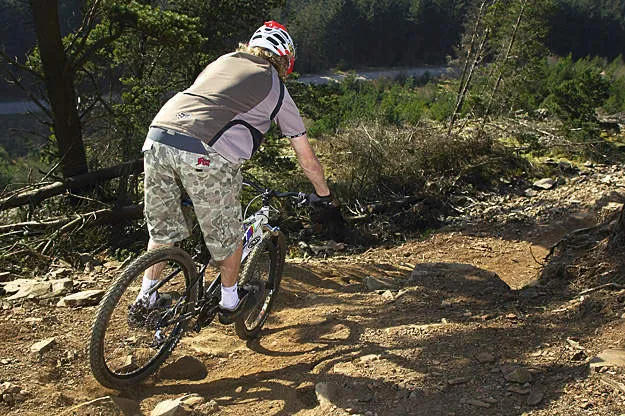
Having looked at the bank, you should have already assessed what the run-in is like. Bear in mind that with steep banks you need to control your speed before hitting the steep section, because braking once on the ‘face’ can really mess things up for you. Also, the run-out should give you some speed and stability – a good thing if you’re a little wobbly while dropping in.
Ride towards the bank at a comfy rolling speed, and as you approach the edge, get out of the saddle with your cranks horizontal. Control your speed – you don’t want to be going too fast or you risk getting airborne. Go slow enough that you can roll without being squirrelly, because a nervous approach is likely to lead to some intimacy with terra firma.
2] Dropping in: Now that you’ve controlled your speed, you need to prepare for freefall. With your take-off spotted, get off the brakes and let the bike take its course. Position-wise, you’ll need to be right off the back of the bike to stop your rear wheel from getting airborne – the last thing you want is a big over-the-bar crash.
Once rolling, spot the run-out area and commit. Let go of the brakes and be ready to pick up speed. Don’t be afraid of momentum because it will make your ride more stable. Keep your weight back, your cranks horizontal and an eye on the run-out.
3] Rolling out:
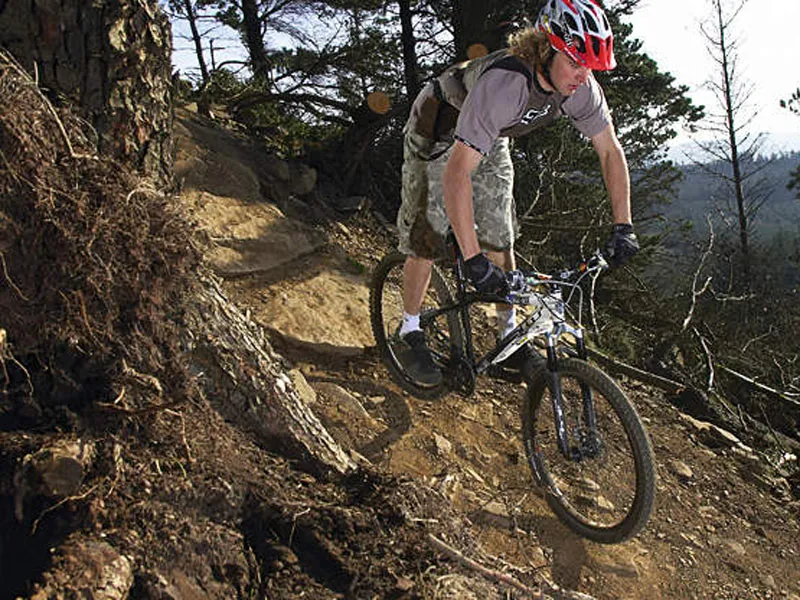
With the momentum from the bank you’ll be going fairly quickly by this point. If there’s a tight transition, you’ll need to be ready for it because it could have you off the front or back of your bike without you realising you even made a mistake.
Assuming the transition is fairly tight, you’ll need to keep all your weight on the pedals as you hit this point. If you’re still leaning back, you risk looping out, and if all your weight is on the front, the rear wheel could un-weight and you’ll be out of control. Don’t hit the brakes as you ‘G-out’ – wait until you’re clear of the transition before adjusting your speed.
- Advanced
Rock drops
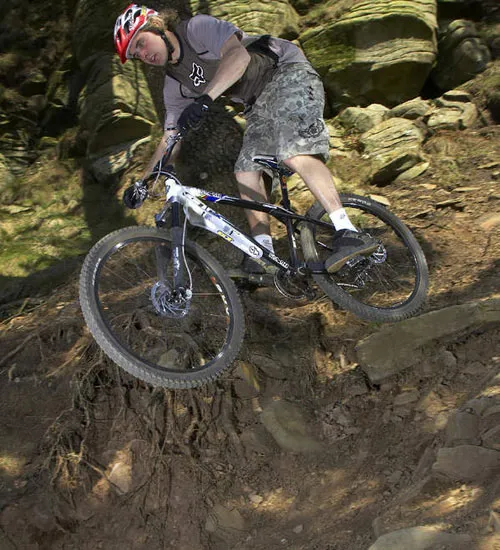
Essentially using the same technique as a normal rock drop, the advanced drop differs only slightly in the approach and run-out. Unlike the basic rock drop, this rock drop is on a slow and demanding section of track.
Once you’ve mastered a basic rock drop, you can gradually build up to most you’ll encounter. Just break them down in to three sections – approach, drop and run-out.
Hardtail wisdom, straight from the Bull’s mouth
Dave Wardell is a pure hardtail rider. Even though he competes on a full-sus downhill bike, most of his riding is still done on a hardtail. “My first bike was a cheap Raleigh Mustang, and my first two seasons of downhill racing were on a £400 hardtail,” says Dave.
“Everyone else was on downhill bikes. In those days, I’d race the downhill on the Saturday and then take off the DCD (chain tensioner/routing device), put bar ends on and race the cross-country on the Sunday.
“My first big win was on a hardtail too. Back in the Youth class I won at FortWilliam by 15 seconds. It finished the bike off though.
“Basically, if you can’t ride a hardtail smoothly, then riding a full suspension bike is going to be a waste of time. On a full suspension bike you can get lazy. Hardtails teach you everything about riding mountain bikes.”
